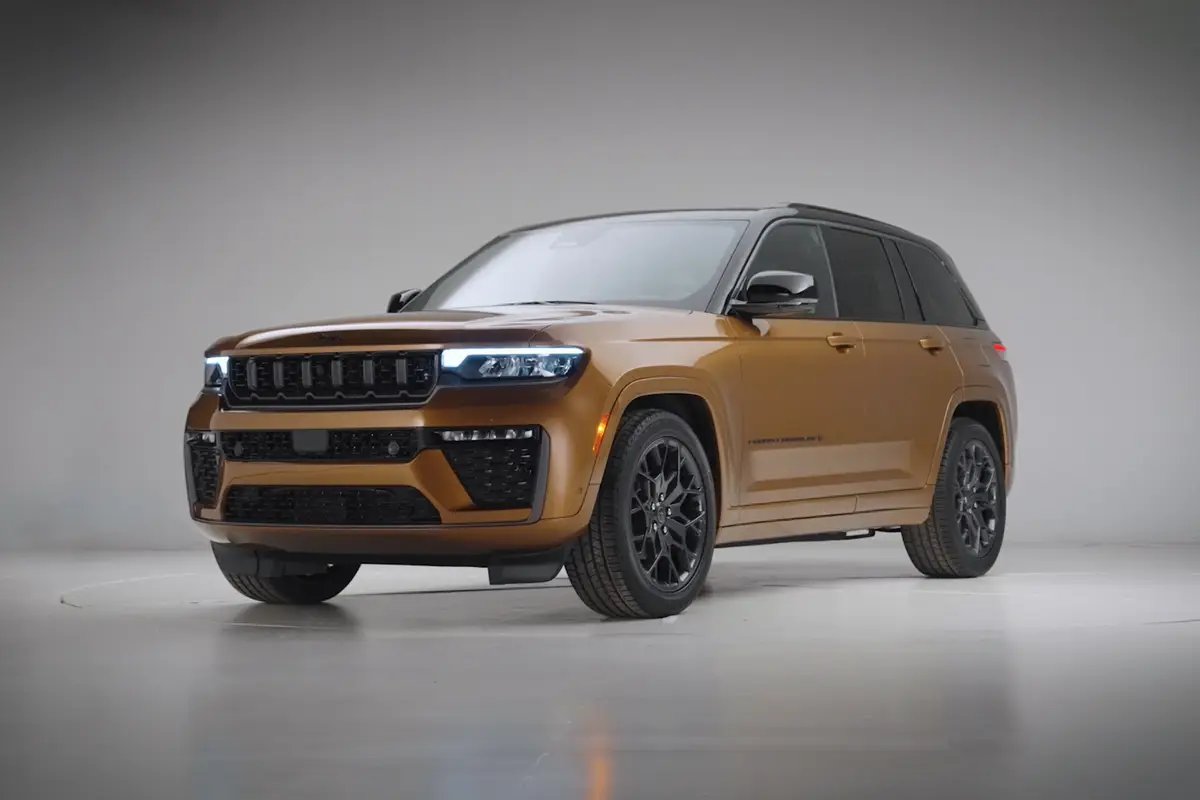2016 Honda Civic Coupe: Car Seat Check


CARS.COM — Our reviewers marveled at how much of the bold, racy styling of Honda’s Civic Concept made it from auto show to showroom on the redesigned-for-2016 Civic coupe. Carrying over from the compact four-seater’s previous generation (fortunate in some ways, less so in others) was its accommodation of car seats. The last time our in-house car seat techs tested the Civic coupe was in 2014, and for the most part its palatably consistent B-grade performance survived to the redesign.
How many car seats fit in the second row? Two
What We Like
- Our infant seat’s thin, hooklike connectors were easy to attach to the coupe’s Latch anchors.
- The three top tether anchors under hinged, plastic covers were easy to locate, access and connect to.
- Our convertible seat in both the rear- and forward-facing positions fit well on the seat bottom with little to no interference from the bolsters or head restraints.
- Although our 6-foot-1-inch front passenger’s knees were in the glove box after we installed the infant seat, a shorter front-seat passenger should be comfortable.
What We Don’t
- The convertible seat’s chunkier, rigid connectors necessitated a hefty application of muscle for Latch anchor connection. The anchors are recessed about an inch and a half into the seat bight behind rather obstructive upholstery.
- Aggressive seat bolsters made it a bit tricky to get the infant seat nestled into position.
- Like the previous generation, floppy seat belt buckles could frustrate kids trying to strap themselves in, while the small, fixed head restraint pushed our booster seat off the seatback a bit.
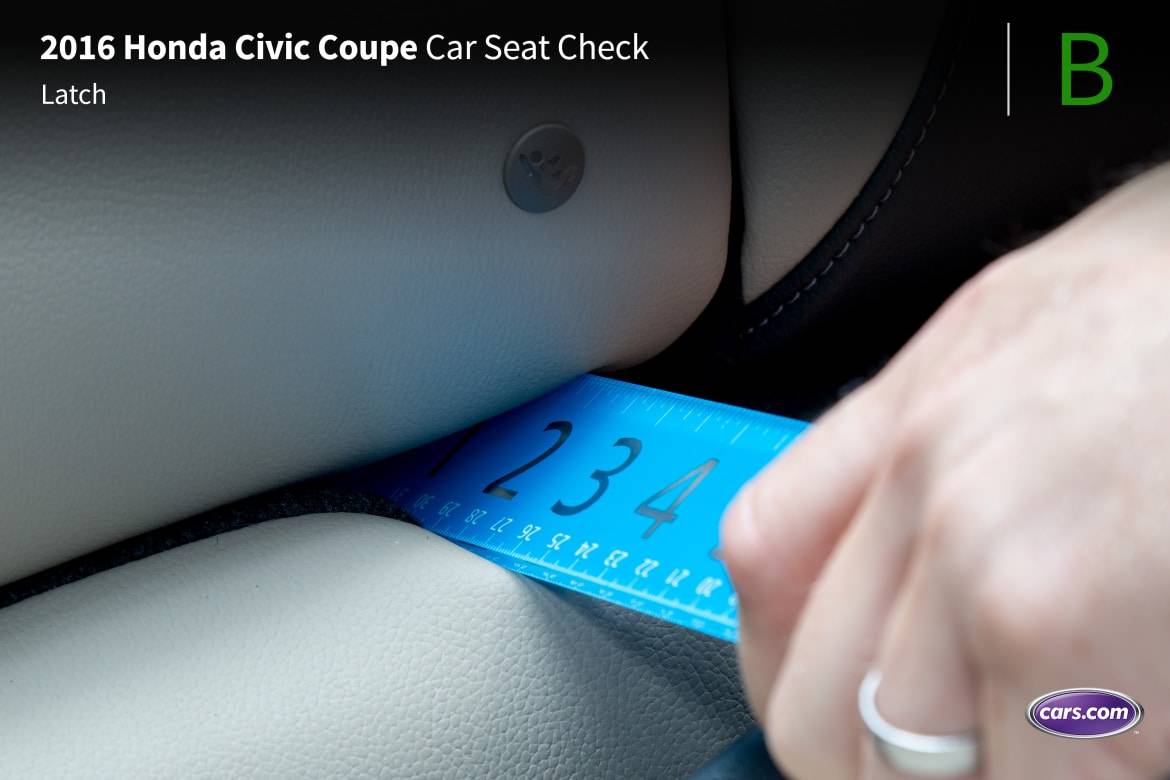
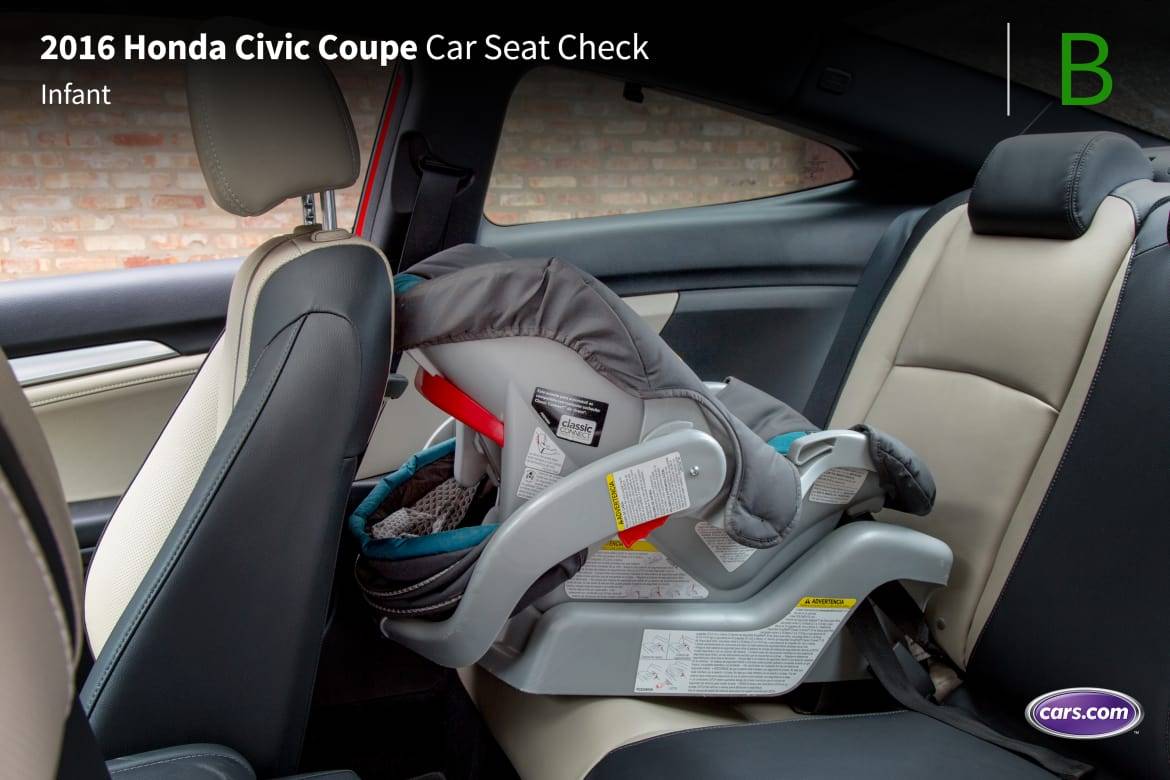
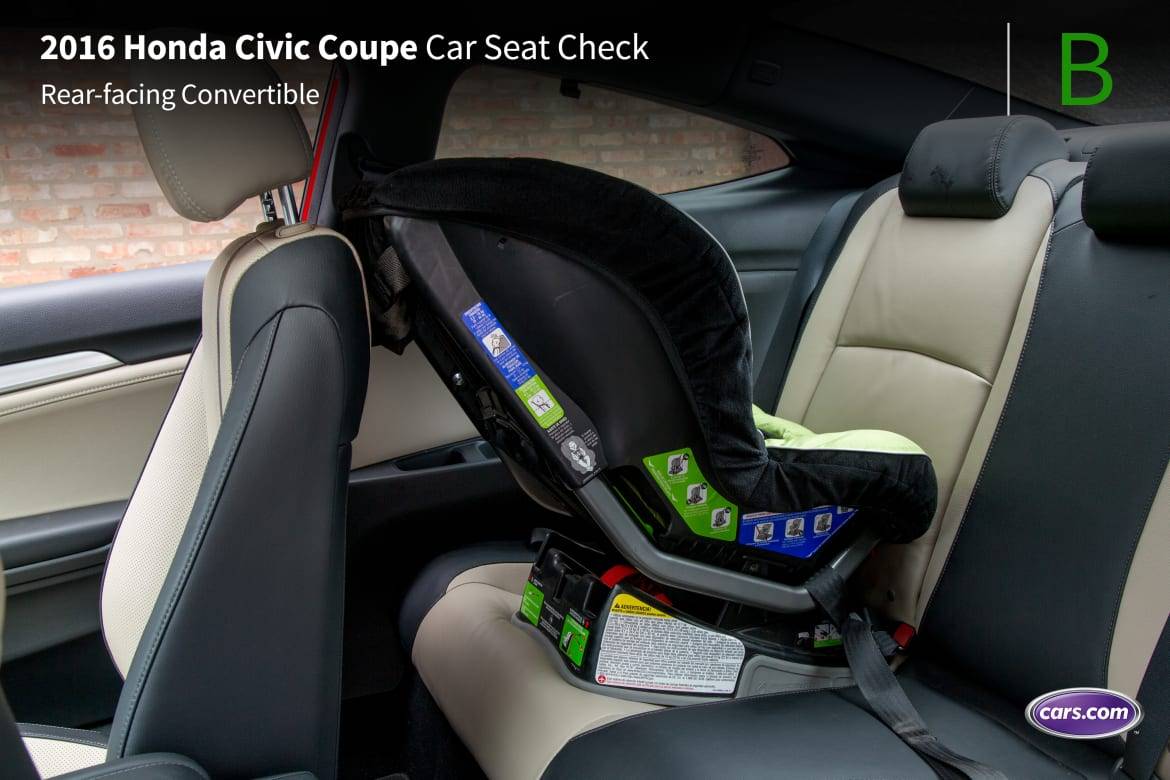
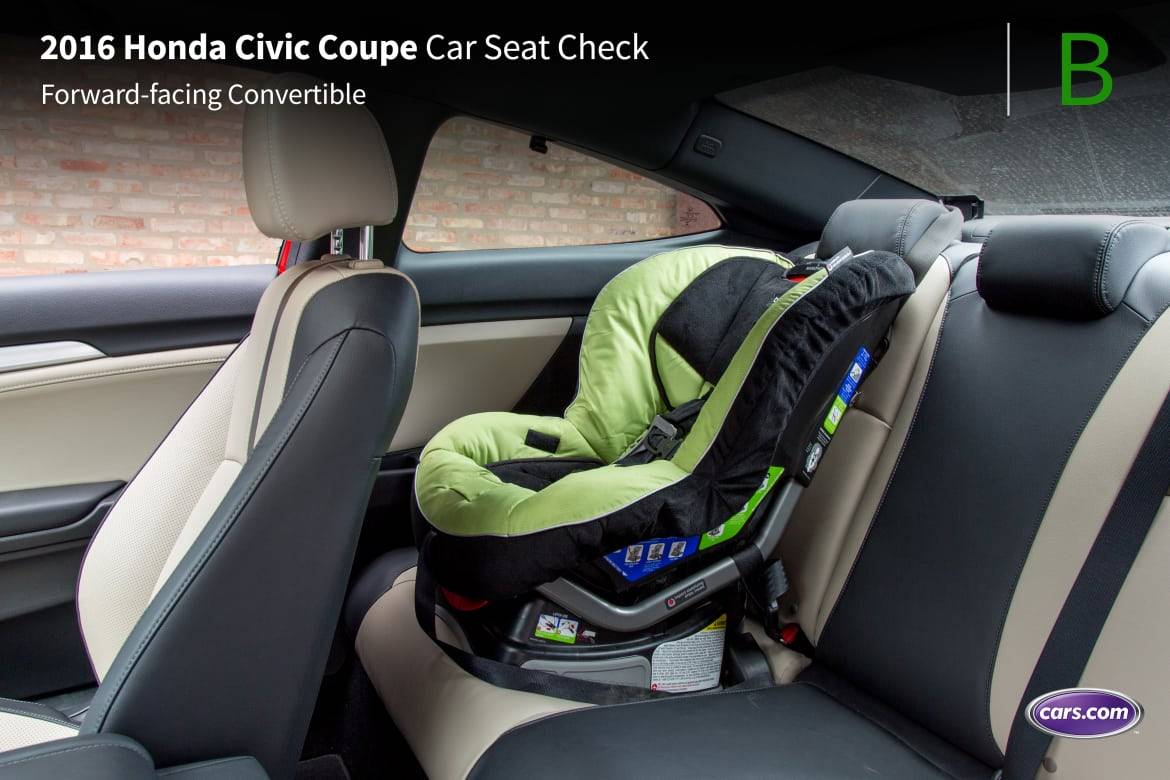






Grading Scale
A: Plenty of room for the car seat and the child; doesn’t impact driver or front-passenger legroom. Easy to find and connect to Latch and tether anchors. No fit issues involving head restraint or seat contouring. Easy access to the third row.
B: Plenty of room. One fit or connection issue. Some problems accessing third row when available.
C: Marginal room. Two fit or connection issues. Difficult to access third row when available.
D: Insufficient room. Two or more fit or connection issues.
F: Does not fit or is unsafe.
About Cars.com’s Car Seat Checks
Editors Jennifer Geiger, Jennifer Newman and Matt Schmitz are certified child safety seat installation technicians.
For the Car Seat Check, we use a Graco SnugRide Classic Connect 30 infant-safety seat, a Britax Marathon convertible seat and Graco TurboBooster seat. The front seats are adjusted for a 6-foot driver and a shorter passenger. The three child seats are installed in the second row. The booster seat sits behind the driver’s seat, and the infant and convertible seats are installed behind the front passenger seat.
We also install the forward-facing convertible in the second row’s middle seat with the booster and infant seat in the outboard seats to see if three car seats will fit; a child sitting in the booster seat must be able to reach the seat belt buckle. If there’s a third row, we install the booster seat and a forward-facing convertible. To learn more about how we conduct our Car Seat Checks, go here.
Parents should also remember that they can use the Latch system or a seat belt to install a car seat, and that Latch anchors have a weight limit of 65 pounds, including the weight of the child and the weight of the seat itself.

Former Assistant Managing Editor-News Matt Schmitz is a veteran Chicago journalist indulging his curiosity for all things auto while helping to inform car shoppers.
Featured stories
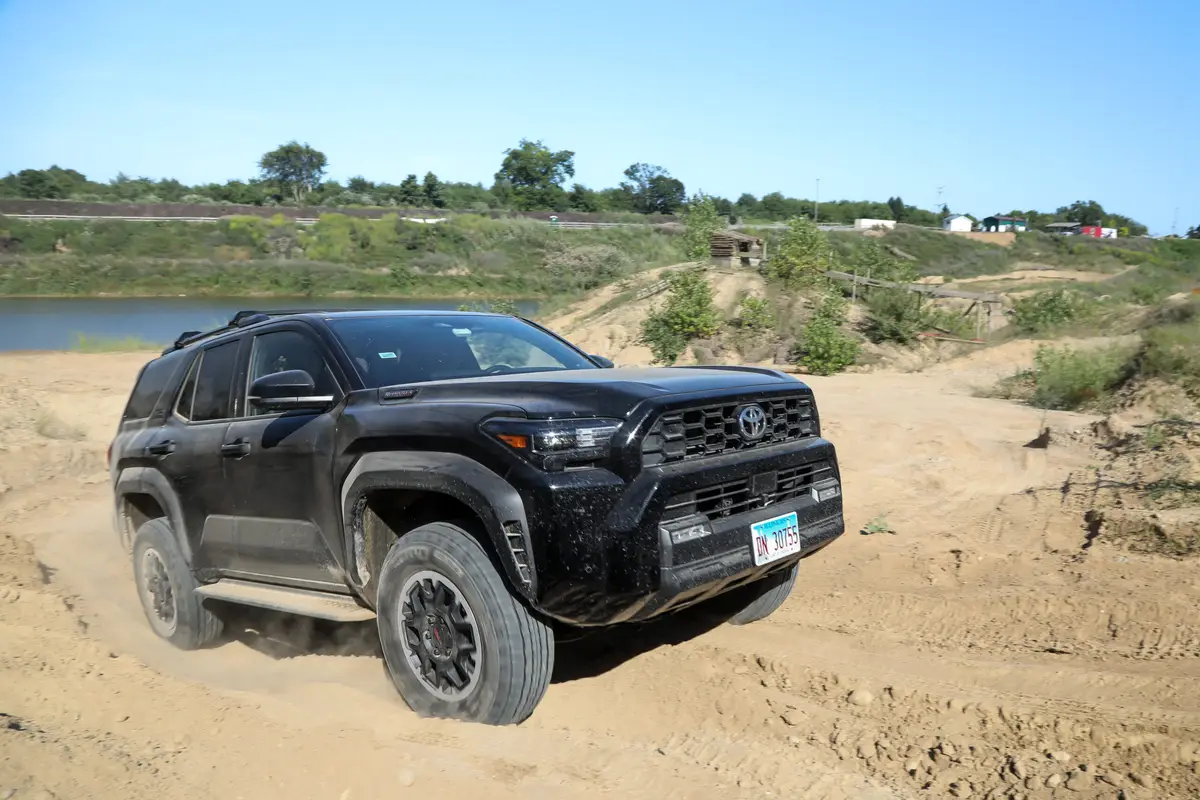
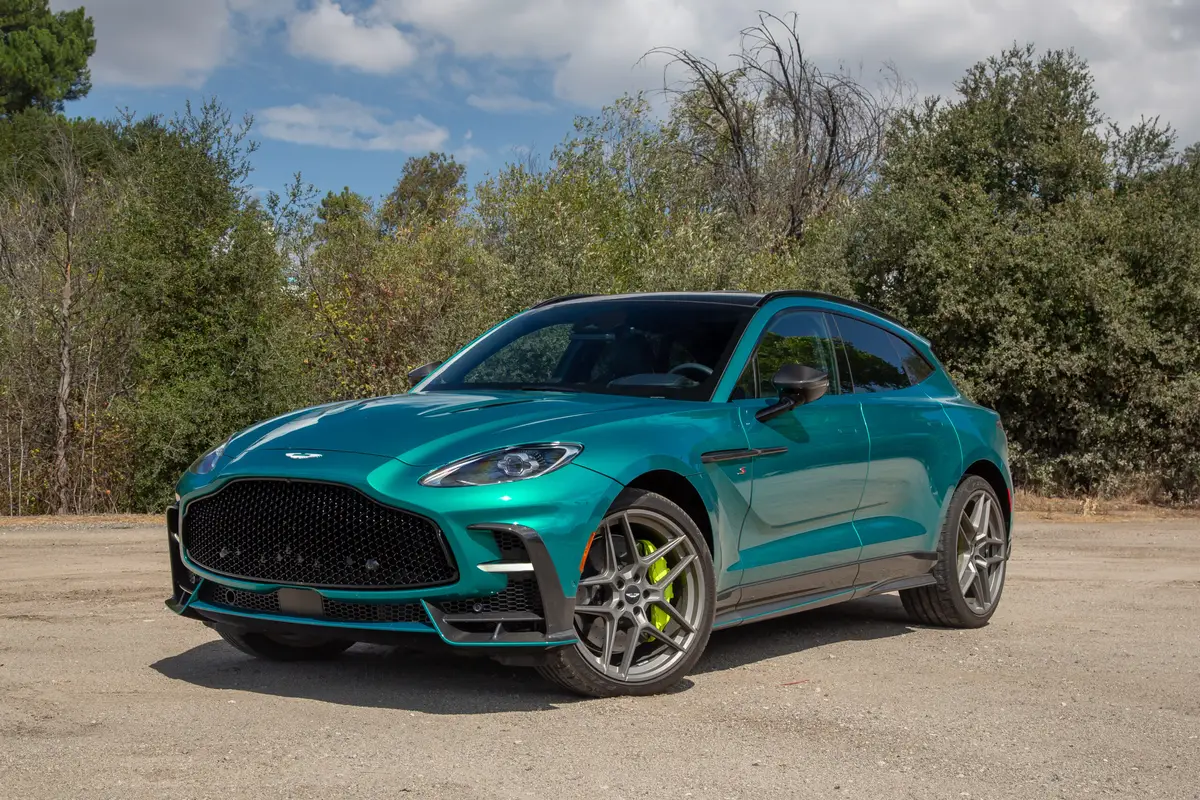
2026 Aston Martin DBX S Review: Excellence in (DB)X S

